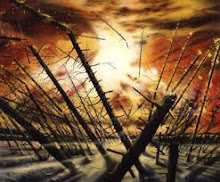In 1999, meteorite hunters discovered that the desert in southern and central Oman were also favorable for the collection of many specimens. The gravel plains in the Dhofar and Al Wusta regions of Oman, south of the sandy deserts of the Rub' al Khali, had yielded about 5,000 meteorites as of mid-2009. Included among these are a large number of lunar and Martian meteorites, making Oman a particularly important area both for scientists and collectors. Early expeditions to Oman were mainly done by commercial meteorite dealers, however international teams of Omani and European scientists have also now collected specimens.
The recovery of meteorites from Oman is currently prohibited by national law, but a number of international hunters continue to remove specimens now deemed "national treasures." This new law provoked a small international incident, as its implementation actually preceded any public notification of such a law, resulting in the prolonged imprisonment of a large group of meteorite hunters primarily from Russia, but whose party also consisted of members from the U.S. as well as several other European countries.
The Black Stone in the wall of the Kaaba in Mecca is thought to be a meteorite by some secular historians, but there is little support for this in the scientific literature




No comments:
Post a Comment